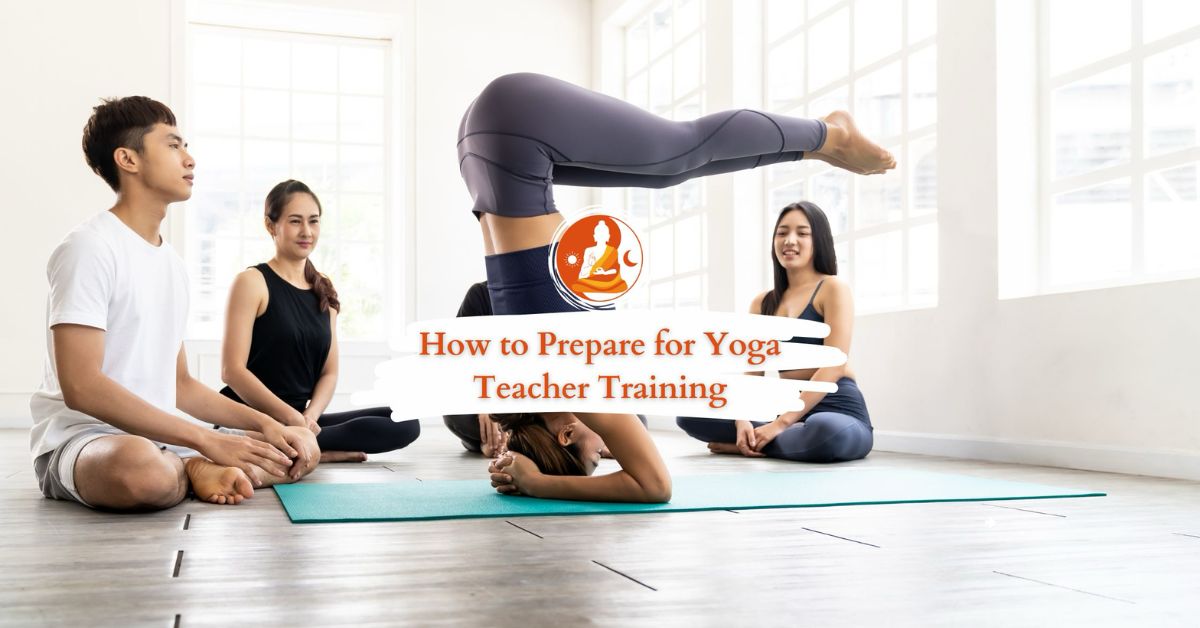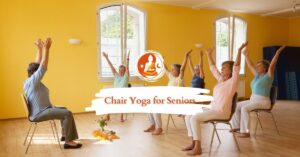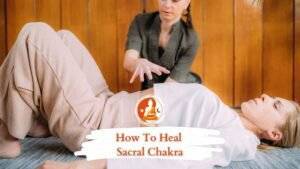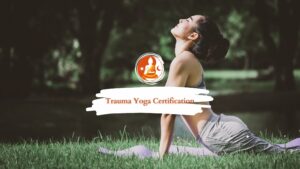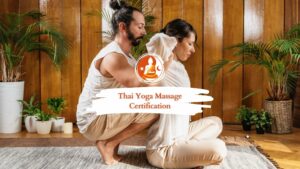Yoga is a time-tested science practiced in India that aims at the well-being of the body, mind, and soul through exercise, pranayama, and meditation. The word yoga is derived from the Sanskrit language and is interpreted as ‘yuj’ which means union and this implies that yoga as a practice is meant to join all parameters of the person.
Yoga deals with the process of stopping the waves of the mind to be able to reach a higher level of consciousness and harmony. This article gives a deep insight into the details of how you can explore the subject of yoga and how to prepare for yoga teacher training in terms of a prospective career in the yogic field. The actual physical movements in yoga enable flexibility of muscles and joints while the regulation of breaths soothes the mind. Yoga has become popular all over the world today. It helps one to relax, to improve flexibility, to build muscle strength, and to improve one’s mental health.
Yoga teacher training programs offer aspiring teachers the knowledge and accreditation to practice yoga. Of particular interest are the intensive training which may take between 200 and 500 hours spread over a few weeks or months.
As for many of the training, they also offer options to gain the experience of student teaching under the supervision of a primary instructor. Graduates of a yoga teacher training program are ready and comfortable in their ability to conduct their classes be it in school, yoga studio, gym or elsewhere. The purpose of these programs is to produce yoga teachers who act as genuine spiritual mentors for their students’ process of enhanced well-being and personal growth.
Yoga teacher training is a truly transformative process that entails time, effort, introspection, and passion for learning. Before you decide to start on this journey, here are some tips that would enable you to get the best out of it and provide you with the right direction on how to prepare for yoga teacher training – a journey that is enriching, fulfilling, and life-changing indeed!
Table of Contents
ToggleResearch Teacher Training Programs
The first decision is to choose the right teacher training. Programs can be compared and contrasted depending on the location, the schedule, the areas of focus, the teaching style, the philosophy, and the cost.
Consider what level would you personally like to focus on or if you desire to begin instructing others. Reflect on whether you picture yourself teaching group classes at a studio or individual lessons. It will also assist in identifying the mode of teacher training that you are most comfortable with. For instance, Iyengar and Ashtanga education focuses on postures and positioning, and Vinyasa and Power Yoga contain more moves.
Contact individuals who have completed the training that interests you to get first-hand information from them. Also, it is advisable to visit the yoga studio or organization in person too as this will help in developing the feel of the place and perhaps even meeting the instructors. When you have taken your list down to a few schools, be sure that the program and philosophy align with what you want.
Cultivate a Routine Yoga Practice
After you have researched teacher training programs, the next step is to take up a consistent personal practice preferably for a minimum of one year before attending teacher training. This will lay a good ground on which you will be able to grasp the rich teachings that are taught and also how to demonstrate a certain technique properly.
Ideally, try to exercise 3-5 times a week focusing on poses, breathing, and meditation. These sequences and philosophical teachings will take more time to be handled during training than when they are part of your body. Adopting such a schedule will enhance confidence, skill, and readiness toward achieving instructor certification.
Learn Basic Yoga Postures and Yoga Anatomy
If you are wondering, how to prepare for yoga teacher training certification, one of the most important things is to read literature by master teachers. This assists in establishing basic postures, terms, origins, and theories as well as essential body structures of yoga.
The recommended books to read more about it are Light on Yoga by B. K. S. Iyengar, The Yoga Tradition by Georg Feuerstein, and The Key Muscles of Yoga by Ray Long. Use textbooks and online courses to understand body systems such as the skeletal structure of muscles and ligaments and energetic channels. When these become automatic, one can sequence classes relying on this knowledge.
Teaching Philosophy and Voice – Self-Assessment
One of the requirements that are critical while considering how to prepare for yoga teacher training, is to define your teaching style and approach. First, ask yourself the kind of intention and motivation you have to teach. If the goal is to build community, then classroom discussion runs counter to that goal; if the goal is to assist students in healing, then classroom discussion does not further that end. Be precise about the kind of teacher you want to be.
Then think about what makes your voice and journey unique. Considering what experiences in one’s life or prior areas of expertise can one apply? This self-work forms the basis for being able to lead change-focused classes that align with your core self. List 3 values that can be considered as the guiding principles for an instructor that can help focus on the preparation for the future path when the lessons seem difficult.
Save and Fundraise
The cost varies depending on location, size of the school, and curriculum, but most 200-hour yoga teacher training certifications cost between $2500-USD 5000, and take at least a few weeks to complete. Hence the need to prepare financially. Save for the program starting at least 6 months before the program commences by setting regular amounts of money from the paycheck aside.
A few teacher training organizations allow payment through installments. It is also possible to raise part of the costs through people’s contributions, which means that you can create a web page where the purpose of the funds you need is described. Foreseeing costs on food, lodging, materials, books, etc. makes it easier to set a realistic budget.
Practice Assisting and Sequencing
Before individuals can teach entire classes at yoga studios they first must train by assisting other teachers. As an assistant, you can prepare the props needed for examples, make adjustments, and start to ease into guiding flows in a helpful role.
Search for apprenticeship and immersion programs in studios offering teacher training you want to take. Another idea is to seek out graduates who may let you sit through their classes as well. When doing sequencing at home, use reference poses focusing on the transitions to think about how one would teach the students. Get friends and relatives to let you help them to navigate through the mini-flows to get their feedback.
Address Areas for Growth
It is wise to take stock of oneself honestly around the areas that need improvement before stepping into this role of a teacher. Think about what emotions and mental processes may emerge when stressed which could be imposed on students if not addressed.
Perhaps, you have low self-esteem in terms of public speaking – a common thing among new lecturers. Take some time for yourself whether for counseling, life coaching, or even holistic healing to be the best person that you can be. Focus on the inner work as much as possible so that you can genuinely help other people once certified.
Network and Build Community
The opportunity to interact with different people affects the chances of adopting a certain mindset. To our surprise, most of the time the people around us become our positive reflection as we involve ourselves with mentors and peers who are also practicing the inner path of yoga. These communities share knowledge to help avoid acting on fears, doubts or limited beliefs about the teacher training journey when vulnerability emerges.
Build rapport with them at the yoga studio where the program you are soon to join will be conducted by regularly practicing the classes. Engage in relevant social media accounts of inspiring educators and listen to their guidance to the time before your training begins. Networking groups, mastermind gatherings of similar business owners and managers, meditative groups, or lecture groups could be relevant as well.
Balance to Prepare the Mind, Body, and Spirit
During these last preparatory months, energy management becomes crucial to come to your yoga teacher certification program fully charged, and ready to embody yourself. Now is not the most suitable time for drastic changes or anything that may take one’s attention.
Stay with the intrinsic wellness interventions that rejuvenate, for example, therapy, nature trips, art, cooking healthy meals, and protecting reasonable hours for sleep, rest, and leisure. Refuse activities that drain, especially if they are not essential or valuable to your achievement of goals. Relaxing when one needs to relax also helps avoid adrenal fatigue from exerting too much pressure. Listen to your gut and let go of expectations.
During physical training, it is recommended that one changes intensity if tired. Observe cycles of how a person feels with attention to the lunar phases and the seasonal changes in energy levels. Tilting the feet on the ground barefoot conditions the nervous system during practice. Simplify flows if stressed. Practice mindfulness meditation each night. With kindness towards self and others, the journey is set for the fulfilling endeavors ahead!
Quick Answers to Common Questions
Ideally, preparation takes 6-12 months and consists of regular asana practice, reading and understanding important texts and human anatomy, engaging in self-reflection, working on sequences for the flows, connecting with like-minded people, and saving money for the program.
To display proper form, exercises such as planks, crow, arm balances, and inversions help in developing core strength. It is often better to master the basic standing and seated positions such as the warrior series first.
It must be noted that teaching certification programs which are intensive 200-hour ones, when combined with a full-time job are particularly challenging. Find out whether your workplace permits working part-time hours or taking extended lunch breaks for class.
Identifying your teaching principles and values aids in defining what going to be suitable branches: if the person is interested in schools aligned with a fixed structure like Iyengar yoga or wants to explore the creative approach to sequences in Vinyasa.
Books such as Light on Yoga, The Yoga Sutras of Patanjali, Functional Anatomy of Yoga, and The Key Muscles of Yoga provide a knowledge base for the mind, body, and soul.
Absolutely! Alignment and biomechanics are significantly more important than flexibility while leading change-based classes for diverse participants.
Contact alumni of your potential school, mentors, studio owners, and master teachers to hear insider tips to build confidence for the fulfilling journey ahead!

